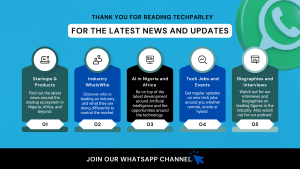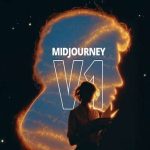YouTube has long been the cornerstone of digital storytelling, education, entertainment, and brand visibility.
Yet, for creators—especially individuals and small teams —the production process remains labor-intensive. From writing scripts to editing hours of footage, the demand for consistency and quality can often outweigh creative freedom.
Now, AI video generation tools are beginning to flip this narrative. These tools are empowering creators to generate high-quality videos in minutes, often without touching a camera or editing software.
They offer speed, scale, and creativity—reshaping the production game for solo creators, startups, and large media brands alike.
1 —Midjourney V1 Leads with Image-to-Video Simplicity
Midjourney, the well-known AI Video Generation platform, recently launched its first video model—V1. Accessible through Discord, it allows users to upload images and convert them into short, dynamic video clips.
The tool generates four 5-second clips from any image, with optional extensions up to 20 seconds.
Users can choose between “low motion” (subtle animations like blinking or wind) and “high motion” (more dramatic actions), or describe desired movements using text prompts.
Midjourney V1 is designed with visual storytelling in mind, catering to creators who rely heavily on thumbnails, visual loops, or aesthetic content.
Though still in early access, V1 positions Midjourney as a top contender in the AI-video space —offering creative possibilities without the typical production lag.
2 —Runway’s Cinematic Engine Reimagines Explainers and Trailers
Runway has been a consistent innovator in the AI video space. Its Gen-4 model produces cinematic video content from simple text prompts.
With refined motion control, atmospheric rendering, and support for realistic character animation, it’s the tool of choice for creators building short films, promo trailers, or high-concept content.
The interface is beginner-friendly, with drag-and-drop features that eliminate the need for deep video editing knowledge.
It supports stock overlays, sound syncing, and real-time preview—making it ideal for educational and narrative YouTube channels that aim for visual impact without post-production bottlenecks.
3 —Synthesia and Pika Labs Redefine Talking-Head Content
For faceless YouTubers or corporate creators, Synthesia delivers AI avatars that speak in natural tones, across over 120 languages.
Users type in a script and select from various avatars to create professional-looking videos with minimal effort. It’s especially popular among explainer, SaaS, and review-based channels.
Pika Labs, on the other hand, focuses on realistic animation and lip-syncing—allowing creators to animate characters or existing illustrations.
The tool supports voice input and produces near-broadcast quality animation, ideal for story-based or entertainment content.
Together, these tools are carving a new niche in AI-based “talking head” content, allowing creators to produce personalized videos at scale—without being on camera.
OpenAI’s Sora Sets the Standard in High-Fidelity AI Video
OpenAI’s Sora model, still in selective rollout, has already stunned the industry with its capacity to generate highly realistic scenes from detailed prompts.
From hyperrealistic cityscapes to stylized dream sequences, Sora is built to handle layered narratives and complex visual interactions.
Though not fully available to the public, early demos suggest that Sora could become a cornerstone for film-grade YouTube content, particularly in science communication, fictional storytelling, and experimental visuals.
What This Means for African and Global Creators
AI video tools represent more than a creative shortcut—they are strategic enablers. For creators across Nigeria, Kenya, Ghana, and other emerging content hubs, they lower traditional barriers like access to studios, equipment, or editing talent.
With the continent’s growing creator economy and smartphone penetration, these tools allow African storytellers to leapfrog into global visibility.
By animating local myths, teaching in native languages, or reacting to cultural moments, creators can now scale both reach and revenue without scaling teams.
As the cost of production drops, storytelling is once again becoming democratic—and deeply personal.
Talking Points
As AI tools proliferate, security concerns remain. Just this week, Andreessen Horowitz’s official X (formerly Twitter) account was briefly hacked and used to post a crypto scam.
Though the company quickly responded, it’s a timely reminder that with new creative power comes new vulnerabilities.
For YouTubers and digital creators leveraging AI platforms, vigilance around account security, software permissions, and third-party integrations is now essential.
- Midjourney just turned your thumbnail into a trailer —no camera required.
- If you’re editing manually in 2025, you’re already behind.
- African YouTubers now have the tools to skip the studio entirely.
- AI fluency will soon matter as much as content strategy.
- Synthesia makes faceless channels look more human than ever.
The AI video revolution isn’t coming—it’s already here. And for creators ready to embrace it, the future of YouTube looks faster, more creative, and radically more accessible.
Whether you’re in Lagos, Los Angeles, or anywhere in between—your next viral video might just be a prompt away.






